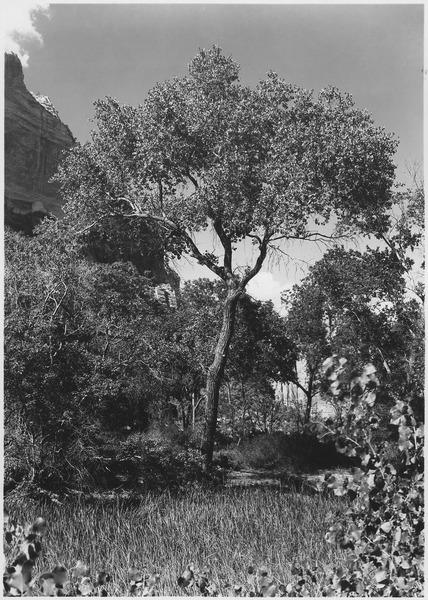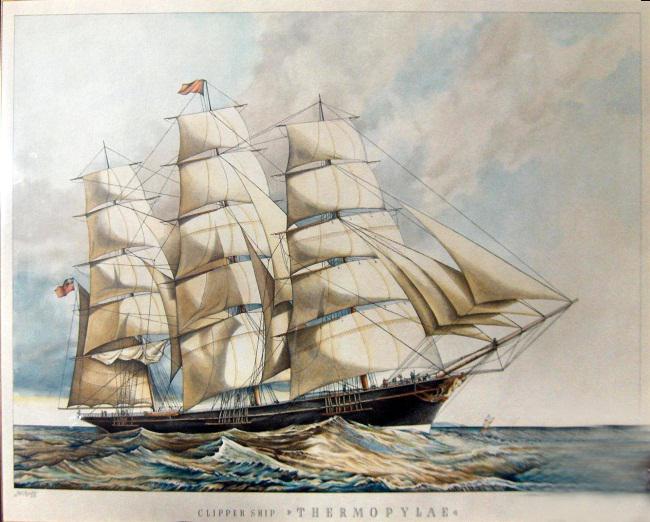It Happened on the Oregon Trail
Excerpt from the chapter “He Who Laughs First”

Photo credit: Library of Congress Prints and Photographs Division Washington, DC 20540 USA http://hdl.loc.gov/loc.pnp/pp.print
The rope attached to the heavy wagon was slipping through Henderson Luelling’s hands, yet the burning sensation paled in comparison to the pain of the financial loss he was about to experience. With every ounce of strength he had Luelling, dripping in perspiration, held his ground. When his heels, embedded in the earth, began to give way, though, it became apparent that he was no match for the toppling weight of his wagon. As Luelling’s proposed fortune slipped out of his hands along with the rope, his wagonload of goods tumbled down a steep bank of the Snake River near the end of his journey. Drenched to the skin Luelling awoke with a jolt and sat up in bed, relieved when he realized that it was just a nightmare plaguing him a week before his departure.
Henderson Luelling, a Quaker from Iowa, had a grand plan to transport his nursery of grafted trees from his orchard all the way to Oregon over the Oregon Trail. The recurring dream must have been his subconscious worrying about the feasibility of it all. Having packed up all that was dear to him, family included, Luelling would soon find out if he could make his fortune.
Those who had gathered to see off the Luelling clan on that spring morning of April 17, 1847, came for various reasons. Some tearfully came to bid dear friends a fond farewell; some came to wish them luck; and some came for a good laugh.
Excerpt from the chapter “You Can Run, But You Cannot Hide”

Photo credit: Grant, George A., Photographer
A billowing cloud of dust hung overhead, making it hard to tell just how many wagons had pulled up. Each succeeding wagon train that arrived on the chaotic scene found it more difficult than the last to ascertain what all the commotion was about. Hundreds of loose cattle were braying, an unknown number of creaking wagons were trying to reposition themselves, and men who couldn’t be seen, but only heard, were shouting directions amid the noise and confusion. Even so, some information filtered down. Details were sketchy, but apparently a posse was being formed. A search was underway for a dozen or so good horsemen from the assembled wagon trains. The volunteer riders were needed to apprehend two men who had recently absconded from camp after committing an atrocity.
Guns in hand, the posse took off from LaBonte Creek Crossing (in present-day southeastern Wyoming) in hot pursuit. The culprits were a nineteen-year-old man named Lafayette Tate, along with his teen brother. Both men were from Jackson County, Missouri. The duo had murdered a fellow emigrant in their wagon train, disarmed the onlookers, then fled.
Excerpt from the chapter “Push Me, Pull Me”

Photo credit: Georges Jansoone
Standing in the light rain on the bow of the old clipper ship, Elizabeth could see the silhouettes of two men making their way through the blanket of fog. The men were looking up from the dock below, intent on seeking out someone in the crowd of immigrants assembled on the deck. Thinking that she recognized the dark figures, Elizabeth drew up the collar of her cloak to hide her face as she hurriedly moved her children away from the railing. The last thing she wanted was another ugly scene.
When she heard her name called out, Elizabeth turned and faced her two brothers, who had come aboard the ship as it waited in the English harbor. One by one, all five of Elizabeth’s children, ranging in age from five to nineteen years, came out from behind their mother. Elizabeth’s brothers implored her not to take the children on what they deemed to be a perilous journey across the Atlantic Ocean, much less an overland pilgrimage in a foreign land. Elizabeth’s intention of following the primitive path referred to as the Oregon Trail was, in their minds, nothing short of ludicrous for a widow with five children.
